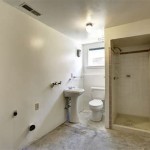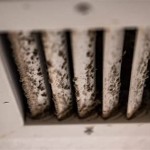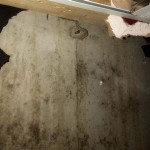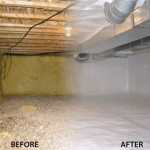Basement Floor Paint and Sealer: Essential Aspects
Transforming the basement floor can significantly enhance the functionality and aesthetic appeal of this often-overlooked space. Basement floor paint and sealer are critical components in achieving a durable, attractive, and moisture-resistant finish that withstands the unique challenges of subterranean environments.
Choosing the Right Paint
Selecting the appropriate basement floor paint is crucial for both aesthetics and performance. Epoxy and latex paints are commonly used options, each offering distinct advantages:
- Epoxy: Highly durable and resistant to chemicals, moisture, and abrasion. Provides a glossy, professional-grade finish.
- Latex: More affordable and easier to apply. Offers a wide range of colors and finishes, but may be less durable than epoxy.
Surface Preparation: A Must for Success
Proper surface preparation is paramount before applying paint or sealer. This involves thoroughly cleaning the floor, removing any grease or dirt, and addressing any cracks or imperfections. A clean and level surface ensures a strong bond between the paint and the floor.
Applying Floor Paint
Once the floor is prepared, it's time to apply the paint. Follow the manufacturer's instructions carefully:
- Stir the paint thoroughly: Ensure even pigment distribution.
- Use a brush or roller specifically designed for epoxy or latex paints: Apply thin, even coats.
- Allow ample drying time between coats: Refer to the manufacturer's guidelines.
- Apply multiple coats: Typically, two to three coats are recommended for optimal results.
Sealing the Floor
After the paint has dried completely, applying a clear sealant is crucial for enhancing durability and moisture resistance. Choose a sealer specifically designed for basement floors to protect against water damage and wear:
- Polyurethane: Forms a hard, protective film.
- Epoxy-based: Similar to epoxy paint, provides excellent durability and moisture protection.
Benefits of Painting and Sealing Basement Floors
The benefits of painting and sealing basement floors are numerous:
- Enhanced Durability: Protects against moisture, abrasion, and chemicals.
- Improved Appearance: Conceals imperfections and creates a clean, finished look.
- Moisture Resistance: Seals cracks and prevents water penetration.
- Increased Value: Adds value to the home and improves the usability of the basement space.
Maintenance Tips
To maintain the appearance and longevity of your basement floor paint and sealer, follow these tips:
- Regular Cleaning: Sweep or mop regularly to remove dirt and debris.
- Periodic Resealing: If the sealant shows signs of wear, apply a fresh coat to maintain protection.
- Avoid Harsh Chemicals: Use mild cleaning agents to prevent damage to the paint and sealer.
Conclusion
Basement floor paint and sealer are essential for transforming the functionality and aesthetic appeal of this often-overlooked space. By choosing the right materials, preparing the surface properly, and following the application instructions carefully, you can achieve a durable, attractive, and moisture-resistant finish that will enhance the value and usability of your basement for years to come.

Opaque Coatings For Concrete Floors Decor

Painted Concrete Floors Pros Cons Ideas How To Tips Network

Concrete Floor Paint Top Tips For Painting Floors

Floor Coating Chip Sealer Less Expensive Top Coats Slide Lok Garage Floors Storage Systems

How To Choose The Best Garage Floor Sealer All Floors

Clear Concrete Sealer How To Choose The Best Type For Your Project

Basement Floor Sealer The Best To Use For Floors

Can You Paint Over Concrete Sealer

The Best Rated Garage Coatings 2024

Floor Paint Primer Priming A Regal Paints
Related Posts







